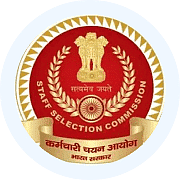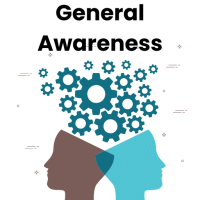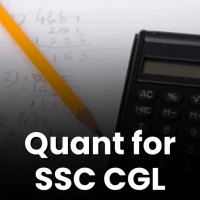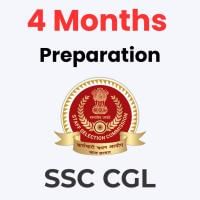SSC CGL Exam > SSC CGL Questions > Direction:In many of the process control appl...
Start Learning for Free
Direction: In many of the process control applications, the purpose of control system is to keep the output (controlled variable) almost constant in spite of changes in load. Mostly in continuous processes the set point remains constant for longer time. Such an operation is called 'Regulator Operation'. The set point generated, and the actual values from sensors are given to a controller. The controller compares both the signals, generates error signal which is utilized to generate a final signal as controller output. The controller output is finally utilized to physically change the values of manipulated variable to achieve stability. The above action is achieved with the help of final control elements. They are operatable either with electrical, pneumatic or with hydraulic signals. The system that serves good for servo operation will generally not be the best for regulator operation. Large capacity or inertia helps to minimize error here, whereas it makes the system sluggish in case of servo operation.
Q. Which out of these is not the operational signal for control system ?
- a)Mechanical
- b)Electrical
- c)Pneumatic
- d)Hydraulic
Correct answer is option 'A'. Can you explain this answer?
Verified Answer
Direction:In many of the process control applications, the purpose of ...
The details given in 4th, 5th and 6th sentence of the passage clearly prove that it is mechanical.
Most Upvoted Answer
Direction:In many of the process control applications, the purpose of ...
Understanding Control System Operational Signals
In control systems, various operational signals are utilized to manipulate the controlled variable. Let's analyze why "Mechanical" is not considered an operational signal in this context.
Types of Operational Signals
- Electrical Signals: These signals are commonly used in control systems. Controllers often generate electrical signals to communicate with final control elements, such as motors and relays.
- Pneumatic Signals: Pneumatic signals utilize compressed air to actuate control elements. They are widely used in systems requiring fast response and high force.
- Hydraulic Signals: Hydraulic systems employ fluid pressure to control actuators. They are effective for applications needing substantial force and precise control.
Why Mechanical is Not an Operational Signal
- Lack of Control Mechanism: Mechanical signals refer to physical motion or force applied directly rather than a modulated signal. Control systems require signals that can be easily manipulated and adjusted to maintain desired outputs.
- Incompatibility with Feedback Systems: Control systems rely on feedback to compare set points and actual outputs. Mechanical signals do not provide the necessary feedback loops for effective regulation.
- Signal Modulation: Operational signals like electrical, pneumatic, and hydraulic can be modulated and adjusted dynamically. Mechanical signals, being inherently static in nature, cannot offer the same level of control.
Conclusion
In summary, while mechanical systems play a role in certain applications, they do not function as operational signals within modern control systems. Instead, electrical, pneumatic, and hydraulic signals provide the necessary flexibility and responsiveness essential for effective control operations.
In control systems, various operational signals are utilized to manipulate the controlled variable. Let's analyze why "Mechanical" is not considered an operational signal in this context.
Types of Operational Signals
- Electrical Signals: These signals are commonly used in control systems. Controllers often generate electrical signals to communicate with final control elements, such as motors and relays.
- Pneumatic Signals: Pneumatic signals utilize compressed air to actuate control elements. They are widely used in systems requiring fast response and high force.
- Hydraulic Signals: Hydraulic systems employ fluid pressure to control actuators. They are effective for applications needing substantial force and precise control.
Why Mechanical is Not an Operational Signal
- Lack of Control Mechanism: Mechanical signals refer to physical motion or force applied directly rather than a modulated signal. Control systems require signals that can be easily manipulated and adjusted to maintain desired outputs.
- Incompatibility with Feedback Systems: Control systems rely on feedback to compare set points and actual outputs. Mechanical signals do not provide the necessary feedback loops for effective regulation.
- Signal Modulation: Operational signals like electrical, pneumatic, and hydraulic can be modulated and adjusted dynamically. Mechanical signals, being inherently static in nature, cannot offer the same level of control.
Conclusion
In summary, while mechanical systems play a role in certain applications, they do not function as operational signals within modern control systems. Instead, electrical, pneumatic, and hydraulic signals provide the necessary flexibility and responsiveness essential for effective control operations.

|
Explore Courses for SSC CGL exam
|

|
Similar SSC CGL Doubts
Question Description
Direction:In many of the process control applications, the purpose of control system is to keep the output (controlled variable) almost constant in spite of changes in load. Mostly in continuous processes the set point remains constant for longer time. Such an operation is called Regulator Operation. The set point generated, and the actual values from sensors are given to a controller. The controller compares both the signals, generates error signal which is utilized to generate a final signal as controller output. The controller output is finally utilized to physically change the values of manipulated variable to achieve stability. The above action is achieved with the help of final control elements. They are operatable either with electrical, pneumatic or with hydraulic signals. The system that serves good for servo operation will generally not be the best for regulator operation. Large capacity or inertia helps to minimize error here, whereas it makes the system sluggish in case of servo operation.Q.Which out of these is not the operational signal for control system ?a)Mechanicalb)Electricalc)Pneumaticd)HydraulicCorrect answer is option 'A'. Can you explain this answer? for SSC CGL 2025 is part of SSC CGL preparation. The Question and answers have been prepared according to the SSC CGL exam syllabus. Information about Direction:In many of the process control applications, the purpose of control system is to keep the output (controlled variable) almost constant in spite of changes in load. Mostly in continuous processes the set point remains constant for longer time. Such an operation is called Regulator Operation. The set point generated, and the actual values from sensors are given to a controller. The controller compares both the signals, generates error signal which is utilized to generate a final signal as controller output. The controller output is finally utilized to physically change the values of manipulated variable to achieve stability. The above action is achieved with the help of final control elements. They are operatable either with electrical, pneumatic or with hydraulic signals. The system that serves good for servo operation will generally not be the best for regulator operation. Large capacity or inertia helps to minimize error here, whereas it makes the system sluggish in case of servo operation.Q.Which out of these is not the operational signal for control system ?a)Mechanicalb)Electricalc)Pneumaticd)HydraulicCorrect answer is option 'A'. Can you explain this answer? covers all topics & solutions for SSC CGL 2025 Exam. Find important definitions, questions, meanings, examples, exercises and tests below for Direction:In many of the process control applications, the purpose of control system is to keep the output (controlled variable) almost constant in spite of changes in load. Mostly in continuous processes the set point remains constant for longer time. Such an operation is called Regulator Operation. The set point generated, and the actual values from sensors are given to a controller. The controller compares both the signals, generates error signal which is utilized to generate a final signal as controller output. The controller output is finally utilized to physically change the values of manipulated variable to achieve stability. The above action is achieved with the help of final control elements. They are operatable either with electrical, pneumatic or with hydraulic signals. The system that serves good for servo operation will generally not be the best for regulator operation. Large capacity or inertia helps to minimize error here, whereas it makes the system sluggish in case of servo operation.Q.Which out of these is not the operational signal for control system ?a)Mechanicalb)Electricalc)Pneumaticd)HydraulicCorrect answer is option 'A'. Can you explain this answer?.
Direction:In many of the process control applications, the purpose of control system is to keep the output (controlled variable) almost constant in spite of changes in load. Mostly in continuous processes the set point remains constant for longer time. Such an operation is called Regulator Operation. The set point generated, and the actual values from sensors are given to a controller. The controller compares both the signals, generates error signal which is utilized to generate a final signal as controller output. The controller output is finally utilized to physically change the values of manipulated variable to achieve stability. The above action is achieved with the help of final control elements. They are operatable either with electrical, pneumatic or with hydraulic signals. The system that serves good for servo operation will generally not be the best for regulator operation. Large capacity or inertia helps to minimize error here, whereas it makes the system sluggish in case of servo operation.Q.Which out of these is not the operational signal for control system ?a)Mechanicalb)Electricalc)Pneumaticd)HydraulicCorrect answer is option 'A'. Can you explain this answer? for SSC CGL 2025 is part of SSC CGL preparation. The Question and answers have been prepared according to the SSC CGL exam syllabus. Information about Direction:In many of the process control applications, the purpose of control system is to keep the output (controlled variable) almost constant in spite of changes in load. Mostly in continuous processes the set point remains constant for longer time. Such an operation is called Regulator Operation. The set point generated, and the actual values from sensors are given to a controller. The controller compares both the signals, generates error signal which is utilized to generate a final signal as controller output. The controller output is finally utilized to physically change the values of manipulated variable to achieve stability. The above action is achieved with the help of final control elements. They are operatable either with electrical, pneumatic or with hydraulic signals. The system that serves good for servo operation will generally not be the best for regulator operation. Large capacity or inertia helps to minimize error here, whereas it makes the system sluggish in case of servo operation.Q.Which out of these is not the operational signal for control system ?a)Mechanicalb)Electricalc)Pneumaticd)HydraulicCorrect answer is option 'A'. Can you explain this answer? covers all topics & solutions for SSC CGL 2025 Exam. Find important definitions, questions, meanings, examples, exercises and tests below for Direction:In many of the process control applications, the purpose of control system is to keep the output (controlled variable) almost constant in spite of changes in load. Mostly in continuous processes the set point remains constant for longer time. Such an operation is called Regulator Operation. The set point generated, and the actual values from sensors are given to a controller. The controller compares both the signals, generates error signal which is utilized to generate a final signal as controller output. The controller output is finally utilized to physically change the values of manipulated variable to achieve stability. The above action is achieved with the help of final control elements. They are operatable either with electrical, pneumatic or with hydraulic signals. The system that serves good for servo operation will generally not be the best for regulator operation. Large capacity or inertia helps to minimize error here, whereas it makes the system sluggish in case of servo operation.Q.Which out of these is not the operational signal for control system ?a)Mechanicalb)Electricalc)Pneumaticd)HydraulicCorrect answer is option 'A'. Can you explain this answer?.
Solutions for Direction:In many of the process control applications, the purpose of control system is to keep the output (controlled variable) almost constant in spite of changes in load. Mostly in continuous processes the set point remains constant for longer time. Such an operation is called Regulator Operation. The set point generated, and the actual values from sensors are given to a controller. The controller compares both the signals, generates error signal which is utilized to generate a final signal as controller output. The controller output is finally utilized to physically change the values of manipulated variable to achieve stability. The above action is achieved with the help of final control elements. They are operatable either with electrical, pneumatic or with hydraulic signals. The system that serves good for servo operation will generally not be the best for regulator operation. Large capacity or inertia helps to minimize error here, whereas it makes the system sluggish in case of servo operation.Q.Which out of these is not the operational signal for control system ?a)Mechanicalb)Electricalc)Pneumaticd)HydraulicCorrect answer is option 'A'. Can you explain this answer? in English & in Hindi are available as part of our courses for SSC CGL.
Download more important topics, notes, lectures and mock test series for SSC CGL Exam by signing up for free.
Here you can find the meaning of Direction:In many of the process control applications, the purpose of control system is to keep the output (controlled variable) almost constant in spite of changes in load. Mostly in continuous processes the set point remains constant for longer time. Such an operation is called Regulator Operation. The set point generated, and the actual values from sensors are given to a controller. The controller compares both the signals, generates error signal which is utilized to generate a final signal as controller output. The controller output is finally utilized to physically change the values of manipulated variable to achieve stability. The above action is achieved with the help of final control elements. They are operatable either with electrical, pneumatic or with hydraulic signals. The system that serves good for servo operation will generally not be the best for regulator operation. Large capacity or inertia helps to minimize error here, whereas it makes the system sluggish in case of servo operation.Q.Which out of these is not the operational signal for control system ?a)Mechanicalb)Electricalc)Pneumaticd)HydraulicCorrect answer is option 'A'. Can you explain this answer? defined & explained in the simplest way possible. Besides giving the explanation of
Direction:In many of the process control applications, the purpose of control system is to keep the output (controlled variable) almost constant in spite of changes in load. Mostly in continuous processes the set point remains constant for longer time. Such an operation is called Regulator Operation. The set point generated, and the actual values from sensors are given to a controller. The controller compares both the signals, generates error signal which is utilized to generate a final signal as controller output. The controller output is finally utilized to physically change the values of manipulated variable to achieve stability. The above action is achieved with the help of final control elements. They are operatable either with electrical, pneumatic or with hydraulic signals. The system that serves good for servo operation will generally not be the best for regulator operation. Large capacity or inertia helps to minimize error here, whereas it makes the system sluggish in case of servo operation.Q.Which out of these is not the operational signal for control system ?a)Mechanicalb)Electricalc)Pneumaticd)HydraulicCorrect answer is option 'A'. Can you explain this answer?, a detailed solution for Direction:In many of the process control applications, the purpose of control system is to keep the output (controlled variable) almost constant in spite of changes in load. Mostly in continuous processes the set point remains constant for longer time. Such an operation is called Regulator Operation. The set point generated, and the actual values from sensors are given to a controller. The controller compares both the signals, generates error signal which is utilized to generate a final signal as controller output. The controller output is finally utilized to physically change the values of manipulated variable to achieve stability. The above action is achieved with the help of final control elements. They are operatable either with electrical, pneumatic or with hydraulic signals. The system that serves good for servo operation will generally not be the best for regulator operation. Large capacity or inertia helps to minimize error here, whereas it makes the system sluggish in case of servo operation.Q.Which out of these is not the operational signal for control system ?a)Mechanicalb)Electricalc)Pneumaticd)HydraulicCorrect answer is option 'A'. Can you explain this answer? has been provided alongside types of Direction:In many of the process control applications, the purpose of control system is to keep the output (controlled variable) almost constant in spite of changes in load. Mostly in continuous processes the set point remains constant for longer time. Such an operation is called Regulator Operation. The set point generated, and the actual values from sensors are given to a controller. The controller compares both the signals, generates error signal which is utilized to generate a final signal as controller output. The controller output is finally utilized to physically change the values of manipulated variable to achieve stability. The above action is achieved with the help of final control elements. They are operatable either with electrical, pneumatic or with hydraulic signals. The system that serves good for servo operation will generally not be the best for regulator operation. Large capacity or inertia helps to minimize error here, whereas it makes the system sluggish in case of servo operation.Q.Which out of these is not the operational signal for control system ?a)Mechanicalb)Electricalc)Pneumaticd)HydraulicCorrect answer is option 'A'. Can you explain this answer? theory, EduRev gives you an
ample number of questions to practice Direction:In many of the process control applications, the purpose of control system is to keep the output (controlled variable) almost constant in spite of changes in load. Mostly in continuous processes the set point remains constant for longer time. Such an operation is called Regulator Operation. The set point generated, and the actual values from sensors are given to a controller. The controller compares both the signals, generates error signal which is utilized to generate a final signal as controller output. The controller output is finally utilized to physically change the values of manipulated variable to achieve stability. The above action is achieved with the help of final control elements. They are operatable either with electrical, pneumatic or with hydraulic signals. The system that serves good for servo operation will generally not be the best for regulator operation. Large capacity or inertia helps to minimize error here, whereas it makes the system sluggish in case of servo operation.Q.Which out of these is not the operational signal for control system ?a)Mechanicalb)Electricalc)Pneumaticd)HydraulicCorrect answer is option 'A'. Can you explain this answer? tests, examples and also practice SSC CGL tests.

|
Explore Courses for SSC CGL exam
|

|
Signup to solve all Doubts
Signup to see your scores go up within 7 days! Learn & Practice with 1000+ FREE Notes, Videos & Tests.




























